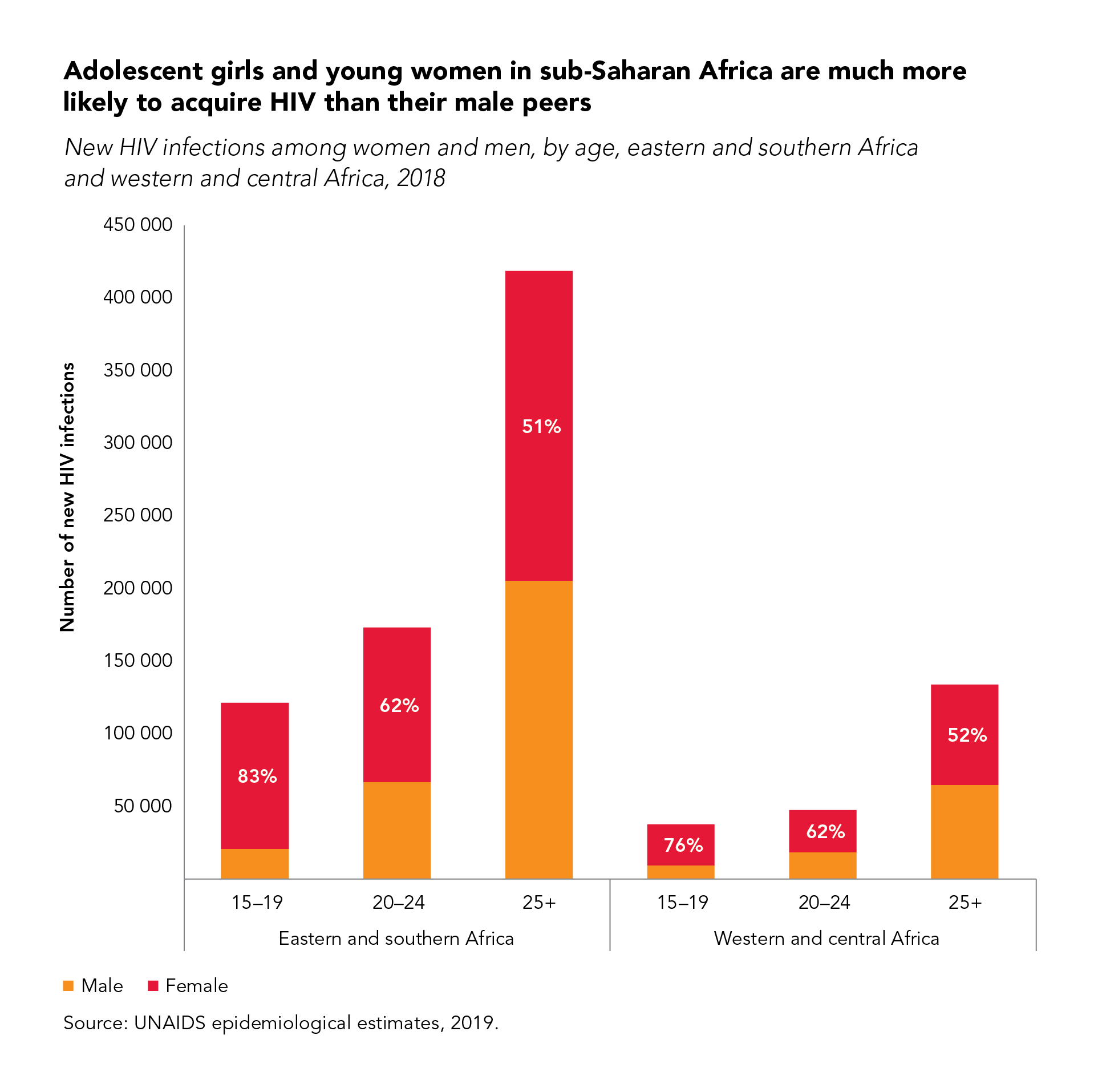Between 1995 and 2018, the steepest decrease in new HIV infections among women occurred among adolescent girls and young women (aged 15 to 24 years)—a decline of 44% globally. Prevention programmes that focus on this age group are having an impact.
Nonetheless, in 2018, approximately 6000 adolescent girls and young women acquired HIV each week, and they accounted for 60% of the estimated 510 000 new HIV infections in that age group. In sub-Saharan Africa, gender-related factors fuelling the epidemic are especially stark: adolescent girls and young women were more than twice (2.4 times) as likely to acquire HIV than their male peers.
The world is still a long way from achieving the global target of reducing new HIV infections among adolescent girls and young women to fewer than 100 000 by 2020: in 2018, that number stood at 310 000, three times higher than the target.




